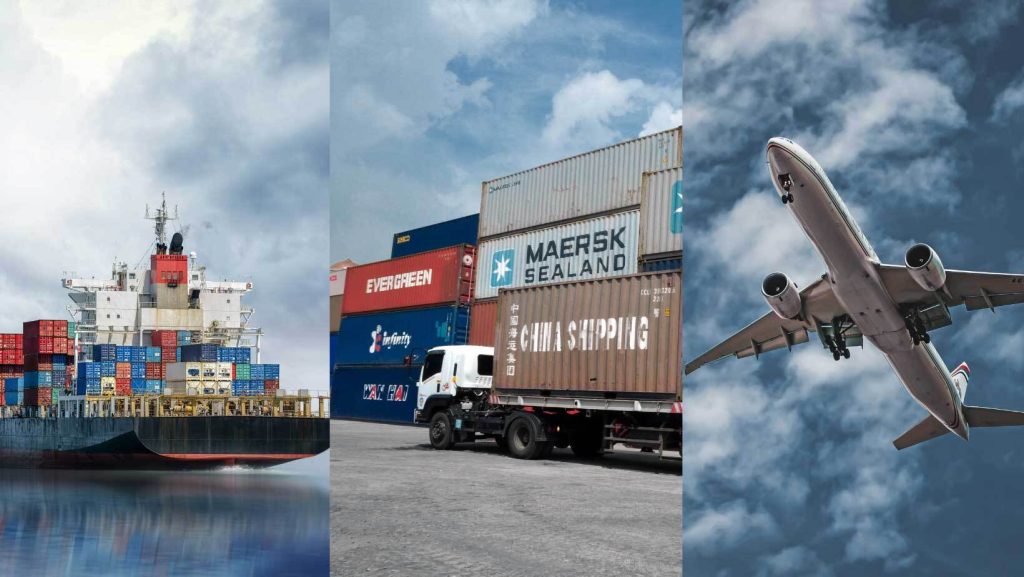
In the complex world of international trade, various parties collaborate to ensure the smooth shipment of goods across borders. Starting from customs house handling agents to shipping companies, each party plays an important role in the process.
Parties Involved In Trade:
Customs House Agent (CHA):
Customs House Agents act as mediators between importers/exporters and customs authorities. They provide the clearance of goods through customs, ensuring compliance with regulations and documentation.
Freight Forwarder:
Freight forwarders manage the logistics of trading goods. They handle the movement of cargo from the start point to its final destination, coordinate shipping, and documentation, and often arrange suitable multiple transports.
Types of Exporters:
Exporters come in different forms, including manufacturers, traders, and merchant exporters. They produce or procure goods for sale in international markets, contributing to a country’s economy by generating foreign exchange.
Consignee:
The consignee is the recipient of the goods, the party for whom the cargo is planned. They may be individuals, companies, or organizations that take ownership of the shipment upon arrival.
Notify Party:
The notify party is informed by the carrier or agent when the shipment reaches the destination port. This party might be the goods importer, consignee, or any other designated entity.
Shipping Company (Mainliners):
Mainline shipping companies operate large-sized ocean vessels that transfer goods between major ports across the globe. These companies provide essential support for global trade, connecting continents and facilitating the trade process.
NVOCC (Non-Vessel Operating Common Carrier):
NVOCCs are mediators that consolidate cargo from multiple shippers into full container loads for ocean transport. They issue their bills of lading and provide value-added services.
Port Authorities:
Port authorities manage and regulate ports, assuring efficient vessel traffic, cargo handling, and port infrastructure. They play a crucial role in facilitating the transfer of goods through the port.
Intermodal Transport Authorities:
Intermodal transport involves the use of various modes of transportation, such as trucks, trains, and ships, to transport cargo from origin to destination. Intermodal transport authorities supervise the coordination of these different modes.

Insurance Company:
Insurance company provides cargo insurance to protect against the risk of loss or damage during transit. This coverage ensures that parties who are involved are financially protected in case of unforeseen events.
Third-Party Agencies:
Third-party agencies offer specialized services like quality inspection, certification, and compliance verification. They assure that goods meet regulatory standards and contractual agreements.
Freight shipping is a important aspect of global trade and logistics. To effectively manage and select the right shipping method, it’s fundamental to understand the concepts of Full Container Load (FCL), Less Container Load (LCL), and the different modes of freight transportation, including sea, air, road, estimated time of departure and estimated time of arrival.
Full Container Load (FCL):
FCL is a shipping method in which an entire container is alloted for the goods of a single shipper. These containers come in standard dimensions, such as 20-foot and 40-foot, and are sealed before container being loaded onto ships, ensuring that the goods are secure and separate from other goods shipments. FCL is often selected for large shipments, as it can be more cost-effective for high-volume cargo.
Less Container Load (LCL):
Less container load, is chosen when a shipper’s cargo doesn’t fill an entire container. In LCL shipments, multiple shippers’ goods are put together into a single container. This facility is cost-effective for smaller shipments, as shippers only pay for the space they require. However, LCL shipments may take longer time to reach their destination due to the need for consolidation and deconsolidation at different port points.
Types Of Freight Transportation in Trade:

Sea Freight:
Sea freight is one of the most common and cost-effective mode for transporting goods internationally. Large cargo vessels export containers across oceans and seas.
Estimated Time of Departure (ETD) for sea freight differs based on the shipping company, sea route, and port congestion. It is scheduled well in advance.
Estimated Time of Arrival (ETA) depends on the destination port, climate conditions, and other possible delays. It’s important to consider these factors when planning shipments.
Air Freight:
Air freight is the fastest mode of transportation, suitable for time-sensitive or high-value cargo.
ETD for air freight is quick, and flights operate on strict schedules.
ETA is also more predictable when it is compared to sea freight, making it a preferred choice for urgent goods shipments.
Road Freight:
Road freight involves transporting goods by trucks or other modes of transport on road networks.
ETD and ETA for road freight are mainly dependent on the distance, road conditions, and traffic. It’s very much suitable for regional or domestic shipping.
Starting from Customs House Agents handling regulatory compliance to shipping companies connecting continents, each party contributes its expertise and facilities to enable the smooth movement of goods across the global marketplace.
Understanding the roles of these parties sheds light on the difficulty and interconnectedness of the international trade system and understanding the differences between FCL and LCL, as well as the different modes of freight transportation, is crucial for effective trade management. When you are planning shipments, consider the estimated time of departure and the estimated time of arrival based on the chosen transport method, and to ensure your goods reach their destination on time and in good condition.
